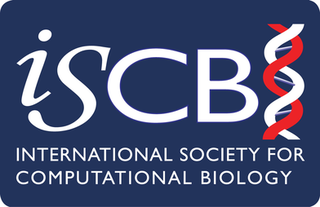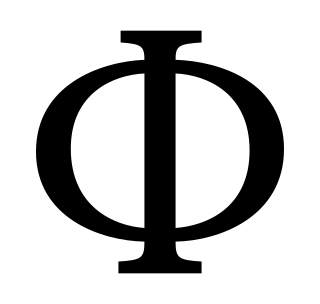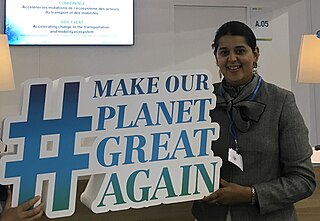Assistant professor is an academic rank just below the rank of an associate professor used in universities or colleges, mainly in the United States, Canada, Japan and South Korea.

A laboratory notebook is a primary record of research. Researchers use a lab notebook to document their hypotheses, experiments and initial analysis or interpretation of these experiments. The notebook serves as an organizational tool, a memory aid, and can also have a role in protecting any intellectual property that comes from the research.
In natural evolution and artificial evolution the fitness of a schema is rescaled to give its effective fitness which takes into account crossover and mutation.

Trace amine-associated receptor 8 is a protein that in humans is encoded by the TAAR8 gene. In humans, TAAR8 is the only trace amine-associated receptor that is known to be Gi/o-coupled.
The Comparative Toxicogenomics Database (CTD) is a public website and research tool launched in November 2004 that curates scientific data describing relationships between chemicals/drugs, genes/proteins, diseases, taxa, phenotypes, GO annotations, pathways, and interaction modules. The database is maintained by the Department of Biological Sciences at North Carolina State University.
The Gene Wiki is a project within Wikipedia that aims to describe the relationships and functions of all human genes. It was established to transfer information from scientific resources to Wikipedia stub articles.

The International Society for Computational Biology (ISCB) is a scholarly society for researchers in computational biology and bioinformatics. The society was founded in 1997 to provide a stable financial home for the Intelligent Systems for Molecular Biology (ISMB) conference and has grown to become a larger society working towards advancing understanding of living systems through computation and for communicating scientific advances worldwide.

Integrated information theory (IIT) proposes a mathematical model for the consciousness of a system. It comprises a framework ultimately intended to explain why some physical systems are conscious, and to be capable of providing a concrete inference about whether any physical system is conscious, to what degree, and what particular experience it is having; why they feel the particular way they do in particular states, and what it would take for other physical systems to be conscious.
The ISCB Overton Prize is a computational biology prize awarded annually for outstanding accomplishment by a scientist in the early to mid stage of his or her career. Laureates have made significant contribution to the field of computational biology either through research, education, service, or a combination of the three.
The ISCB Accomplishment by a Senior Scientist Award is an annual prize awarded by the International Society for Computational Biology for contributions to the field of computational biology.

The International Society for Computational Biology Student Council (ISCB-SC) is a dedicated section of the International Society for Computational Biology created in 2004. It is composed by students from all levels in the fields of bioinformatics and computational biology. The organisation promotes the development of the students' community worldwide by organizing different events including symposia, workshops, webinars, internship coordination and hackathons. A special focus is made on the development of soft skills in order to develop potential in bioinformatics and computational biology students around the world.

The European Conference on Computational Biology (ECCB) is a scientific meeting on the subjects of bioinformatics and computational biology. It covers a wide spectrum of disciplines, including bioinformatics, computational biology, genomics, computational structural biology, and systems biology. ECCB is organized annually in different European cities. Since 2007, the conference has been held jointly with Intelligent Systems for Molecular Biology (ISMB) every second year. The conference also hosts the European ISCB Student Council Symposium. The proceedings of the conference are published by the journal Bioinformatics.

Ruth Nussinov is an Israeli-American biologist born in Rehovot who works as a Professor in the Department of Human Genetics, School of Medicine at Tel Aviv University and is the Senior Principal Scientist and Principal Investigator at the National Cancer Institute, National Institutes of Health. Nussinov is also the Editor in Chief of the Current Opinion in Structural Biology and formerly of the journal PLOS Computational Biology.
The ISCB Innovator Award is a computational biology prize awarded annually to leading scientists who are within two decades post-degree, who consistently make outstanding contributions to the field, and who continue to forge new directions. The prize was established by the International Society for Computational Biology (ISCB) in 2016 and is awarded at the Intelligent Systems for Molecular Biology (ISMB) conference. The inaugural recipient was Serafim Batzoglou.
ISCB Fellowship is an award granted to scientists that the International Society for Computational Biology (ISCB) judges to have made “outstanding contributions to the fields of computational biology and bioinformatics”. As of 2019, there are 76 Fellows of the ISCB including Michael Ashburner, Alex Bateman, Bonnie Berger, Steven E. Brenner, Janet Kelso, Daphne Koller, Michael Levitt, Sarah Teichmann and Shoshana Wodak. See List of Fellows of the International Society for Computational Biology for a comprehensive listing.

Bruce Colston Trapnell Jr. is an assistant professor in the Department of Genome Sciences at the University of Washington. He was awarded the Overton Prize by the International Society for Computational Biology (ISCB) for “outstanding accomplishment in the early to mid stage of his career” in 2018.

Sapna Sharma is a Canadian limnologist and associate professor of biology at York University. Sharma studies human-induced environmental stressors and holds the York University Research Chair in Global Change Biology. She obtained her PhD at the University of Toronto and held post-doctoral fellowships at the University of Montreal and the Center for Limnology at the University of Wisconsin–Madison.
Biocuration is the field of life sciences dedicated to organizing biomedical data, information and knowledge into structured formats, such as spreadsheets, tables and knowledge graphs. The biocuration of biomedical knowledge is made possible by the cooperative work of biocurators, software developers and bioinformaticians and is at the base of the work of biological databases.
The Art of Doing Science and Engineering is a book by American mathematician Richard Hamming. The book comes from a course Hamming taught at the Naval Postgraduate School in Monterey, California. The book was originally published in 1997 by Gordon & Breach. It was republished in 2020 by Stripe Press.








